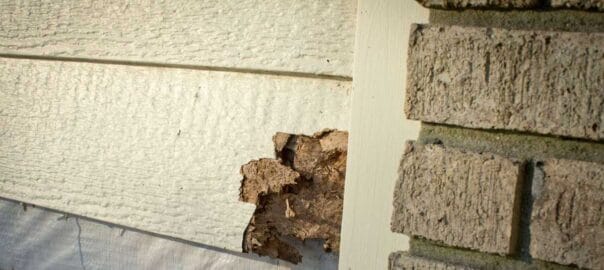If you’ve ever lived in Colorado, you know the weather here is more unpredictable than your favorite mystery novel. One moment, the sun shines, and you’re happily sipping an iced coffee on the porch.
Next, a hailstorm hits like it’s straight out of a disaster movie. And let’s not even get started on the snow – 6 inches one day, 60 degrees the next. This extreme weather is precisely why your siding is under constant assault here in the Centennial State.
Think of your siding as the armor protecting your home from the elements. But even the most formidable armor can take a beating when the weather is as extreme as it is in Colorado. So, what makes Colorado weather so harsh on your siding? And what can you do to protect your home from it? Let’s dive in.
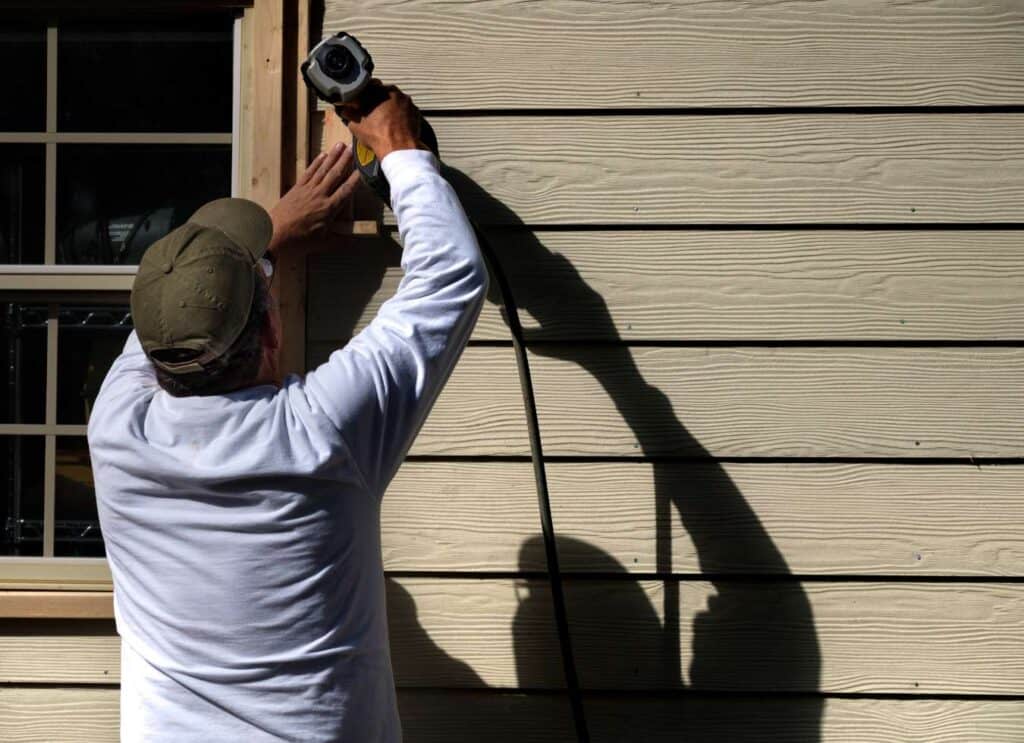
Why Is Colorado Weather So Tough on Siding?
Colorado isn’t known for its mild climate—it’s known for extremes. Whether it’s hailstorms, wildfires, freezing winters that can lead to significant wear and tear on your Colorado home, or scorching summers, Colorado’s weather puts a lot of pressure on the materials that make up your home, especially your siding.
1. Hailstorms: A Siding’s Worst Nightmare
First up, let’s talk about hail. Oh, Colorado’s beloved hail. As a state, we experience some of the most severe weather conditions that can affect our homes. Most intense hailstorms in the U.S. With hailstones that can reach the size of a golf ball (or even a baseball in extreme cases), it’s no surprise that our siding takes a serious hit.
When hailstones hit your siding, it’s like an attack from nature’s version of t-ball. Brutal, fast, and unforgiving. If your siding is made from materials like vinyl, it can dent, crack, or even shatter when it’s pummeled by hail. Fiber cement siding (like James Hardie), on the other hand, is much more resilient, but even it can show signs of wear over time due to severe weather conditions. The impact of these hailstorms can shorten the lifespan of your siding, leading to more frequent repairs or even a replacement.
2. Wildfires: Not Just for Campfires Anymore
As much as we love Colorado’s beautiful forests and mountains, they also have a particular risk. Wildfires have become an increasingly serious problem in the state and pose a significant threat to your home’s siding.
Certain types of siding materials, like vinyl, are highly flammable. In the event of a nearby wildfire, the intense heat and flying embers can cause vinyl siding to melt or even catch fire. This is why fire-resistant materials like fiber cement siding (looking at you, Hardie siding) are a smart choice for homes in wildfire-prone areas. They’re much more likely to survive a wildfire, helping keep your home safe.
3. The Freeze and Thaw Cycle: Mother Nature’s Prank
One of Colorado’s most frustrating weather quirks is the freeze-and-thaw cycle. In winter, temperatures often dip below freezing, only to spike above freezing during the day. This constant shifting between freezing and thawing can cause moisture to get trapped in your siding. When water freezes, it expands, and when it thaws, it contracts. This constant expansion and contraction can cause your siding to crack, warp, or split.
If you’ve ever left a bottle of soda in the freezer too long, you know what happens—expansion, explosion, mess. Well, your siding doesn’t quite explode, but it can show signs of damage over time due to this freezing and thawing process.
4. UV Rays and High Altitudes: A Recipe for Fading
Ah, the Colorado sunshine. We all love it, but let’s face it: the sun in Colorado can be a bit relentless, especially given the many homeowners who deal with harsh weather conditions—high elevation. At 5,280 feet above sea level (in case you forgot, Colorado is known as the Centennial State), our proximity to the sun makes those UV rays stronger and harsher.
If you’ve ever noticed that your vinyl siding seems to fade faster than you can say “summer,” you’re not imagining it. Vinyl siding tends to fade after prolonged exposure to UV rays. As the sun’s ultraviolet rays break down the pigments in the material, your siding can lose its color, leaving it dull and worn. This means your home’s curb appeal takes a hit—and you may need to repaint or replace the siding sooner than you’d like.
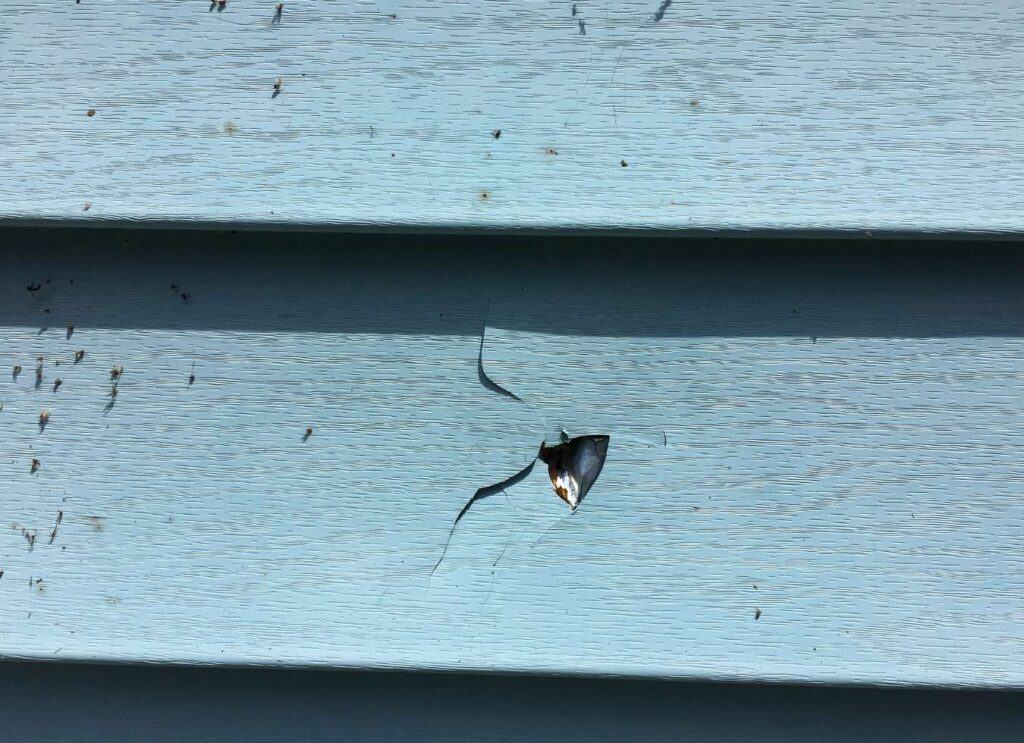
How Can You Protect Your Siding?
So now that we’ve established that Colorado weather is no joke, let’s talk about protecting your siding from all these harsh elements. Here are some proactive steps you can take to help your siding stand up to the tests of Colorado’s extreme weather:
1. Choose Durable Materials Like Fiber Cement Siding
When protecting your home, fiber cement siding (like Hardie Siding) is your best bet. As we’ve mentioned, this material is incredibly durable and resilient, which makes it much more capable of handling Colorado’s wild weather than vinyl or wood.
- Hail Resistance: Fiber cement siding won’t dent or crack as easily as vinyl when it’s pelted by hail.
- Fire Resistance: Unlike vinyl, fiber cement siding is fire-resistant, making it a safer option in areas prone to wildfires and intense weather conditions.
- Freeze and Thaw Durability: Fiber cement can withstand the constant expansion and contraction caused by freezing and thawing without losing its shape or structural integrity.
2. Regular Inspections and Maintenance
Regular maintenance is key, even if you’ve got the most durable siding material on the market. Think of it like changing your car’s oil—preventive care keeps things running smoothly.
Here are some maintenance tips:
- Inspect for damage after storms or hail events.
- Clean your siding to withstand the intense UV exposure and prevent rot. Regularly remove dirt, debris, and algae buildup (this is especially important if you have vinyl siding, which can show dirt more quickly).
- Check for gaps or cracks, especially around windows, doors, and corners. These small openings can let moisture in, causing further damage.
3. Invest in High-Quality Installation
Poor installation can undermine the effectiveness of the siding material, no matter how durable it is. Ensure your siding is installed by certified professionals who understand the unique challenges that Colorado weather poses. Proper installation can ensure that your siding is sealed tightly, preventing water from getting behind it and causing damage.
4. Consider Upgrading to Insulated Siding
In addition to choosing a durable material like fiber cement, consider insulated siding. This type of siding is foam-backed, which provides an extra layer of insulation. This helps with energy efficiency and adds a barrier against moisture damage, especially during those freeze-and-thaw cycles we’re so familiar with here in Colorado.
5. Stay Ahead of UV Damage with High-Quality Paint
If you have wood siding, one of the best ways to protect it from UV rays is by regularly repainting it with high-quality, UV-resistant paint. This helps prevent fading and keeps your siding looking fresh and vibrant, even under the intense UV exposure of the Colorado sun.
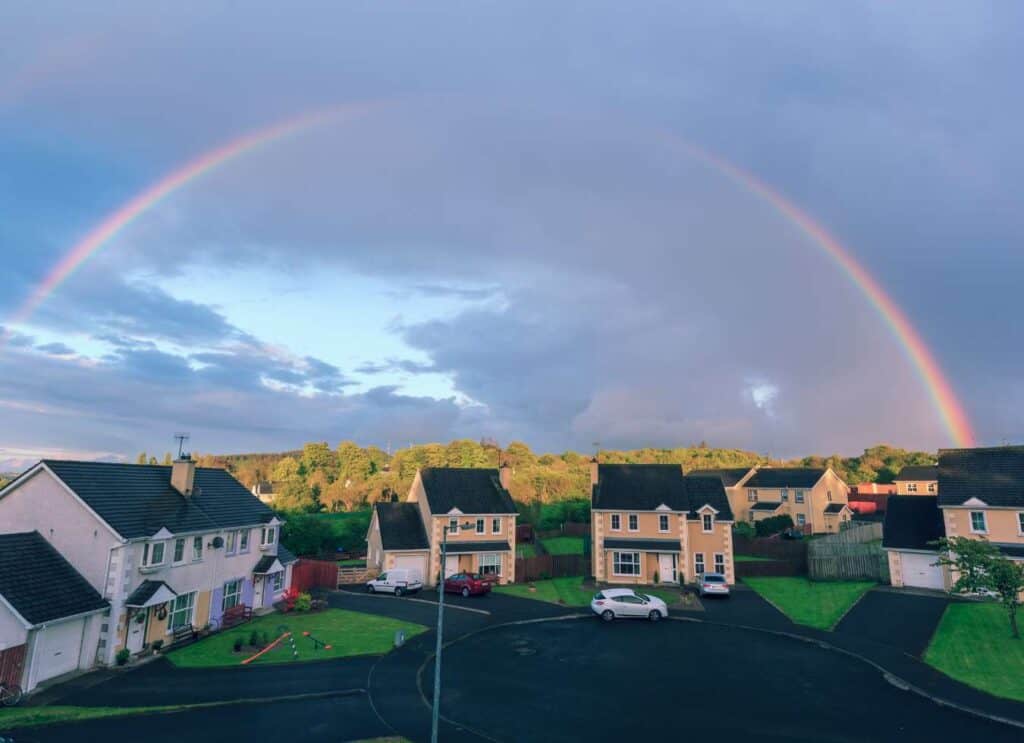
Other Popular Questions Related to Climate Challenges in Siding Options
Q: Why is siding in Colorado a concern for homeowners?
A: Siding in Colorado is a concern due to the state’s unique climate, which includes extreme temperature fluctuations and severe weather conditions. These factors can impact the integrity of your home’s exterior, making choosing the right siding solution crucial.
Q: What are the best siding solutions for Colorado’s climate?
A: Durable materials like fiber cement siding and engineered wood siding are the best solutions for Colorado’s climate. These options are designed to withstand the harsh environment and give homeowners peace of mind.
Q: How does vinyl siding perform in Colorado’s unique weather patterns?
A: Vinyl siding can become brittle in Colorado’s extreme weather conditions, especially during temperature fluctuations. While it is a common siding material, it may not always be the best choice for Colorado homes.
Q: What makes James Hardie a preferred choice for Colorado homes?
A: James Hardie siding is a preferred choice for Colorado homes because it is made from fiber cement, is highly durable, and is resistant to warping, cracking, and other damage caused by Colorado’s varied climate.
Q: What are the advantages of choosing engineered wood siding in Colorado?
A: Engineered wood siding offers the appearance of traditional wood siding but with enhanced durability and resistance to the harsh climate. It is an excellent siding option for maintaining your home’s exterior aesthetic and structural integrity.
Q: How can homeowners ensure the longevity of their siding in Colorado?
A: Regular maintenance is key to ensuring the longevity of your siding in Colorado. This includes cleaning, inspecting for damage, and addressing any issues promptly. Choosing the right siding material can also reduce the need for frequent repairs.
Q: What should homeowners consider when selecting a siding company in Colorado?
A: Homeowners should consider selecting a siding company with experience in Colorado’s climate, offering a range of durable siding options, and providing excellent customer service. A reputable James Hardie contractor can be a reliable choice.
Q: How does Colorado’s climate affect traditional siding materials?
A: Colorado’s climate challenges traditional siding materials like wood, which can warp and deteriorate over time due to moisture and temperature changes. Opting for more durable materials can mitigate these issues.
Q: Why is it essential to address siding issues promptly in Colorado?
A: It is essential to address siding issues promptly in Colorado to prevent further damage to your home’s exterior. The state’s extreme weather conditions can exacerbate existing problems, leading to costly repairs if not managed promptly.
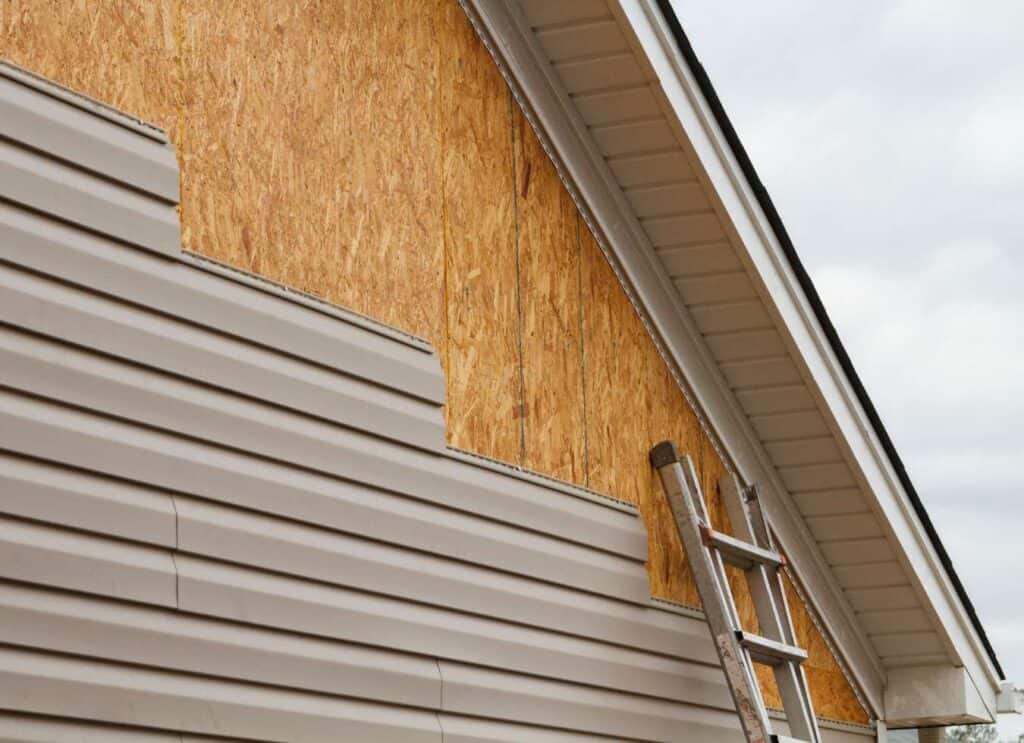
The Takeaway: Protect Your Siding, Protect Your Home
In Colorado, your siding is more than just a pretty face—it’s the first line of defense against the brutal elements. Colorado weather can damage your siding and leave your home vulnerable to hailstorms, wildfires, and freeze-thaw cycles. That’s why choosing a durable material like fiber cement siding (ahem, Hardie siding) is an investment in your home’s longevity and curb appeal.
At Denny’s Roofing, we understand Colorado homeowners’ unique challenges, especially with the area’s temperature fluctuations. We’re here to help you choose the right siding for your home and ensure it’s appropriately installed to stand up to the test of time. Whether replacing your old siding or starting fresh with a new home, we’ve got you covered.
Ready to give your Colorado home the protection it deserves? Contact Denny’s Roofing today to learn how we can help you upgrade to siding built to last through Colorado’s crazy weather. Because when it comes to your home, you deserve the best—don’t settle for anything less than the ultimate protection.

